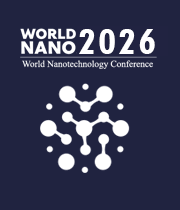Abstract:
Nanotechnology and eye tracking are two distinct fields that have the potential to complement each other, revolutionizing how we explore and interact with our surroundings, such as between students and schools. Nanotechnology, engineering at the atomic and molecular level, has the potential to significantly improve current eye tracking systems. Currently, eye tracking technologies often rely on bulky infrared cameras and sensors. Nanotechnology allows for the creation of smaller, more efficient, and more discreet devices.
Biography:
Malgorzata Obrycka is a Doctor of Social Sciences, educator, and psychologist. Author of eye-tracking, phenomenographic, and social studies reports. Her research interests include research methodology, including research on interpersonal and interspecies humanitarianism, with particular focus on the analysis of the development of human moral identity in the context of contemporary civilizational and cultural dilemmas, independent ethics, communication, technology, praxeology, posthumanism, and transhumanism. Her research to date encompasses research commercialization, the impact of science on the economy and society, as well as issues related to ethical education, family pedagogy, the history of education, social research methodology, and social relations, including assessing the usefulness of research methods, techniques, and tools appropriate for identifying educational phenomena.



